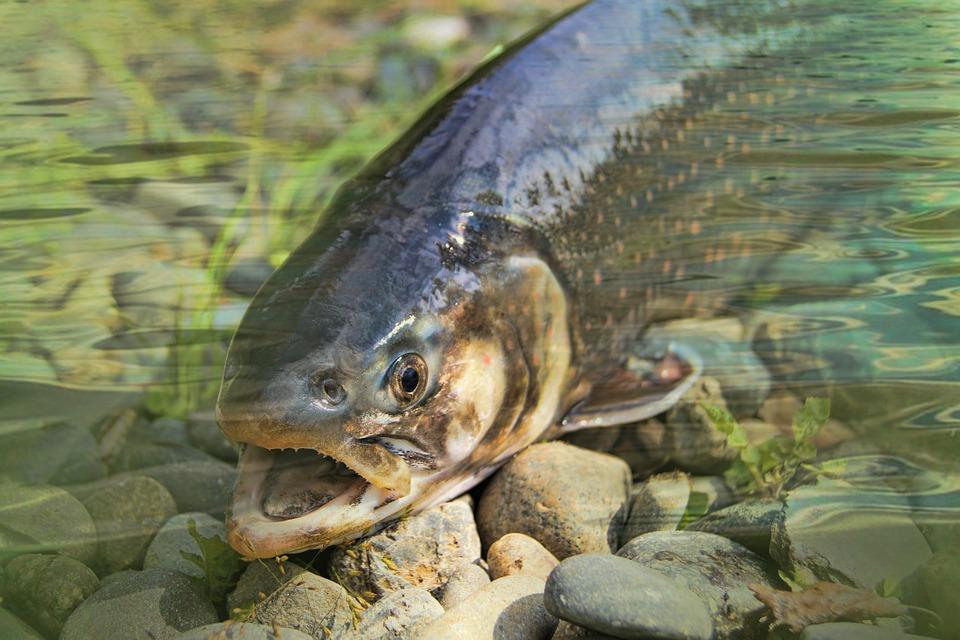
A declining population of Atlantic salmon in Alaska will lead to shortages among US economic partners
Alaska is one of the largest and most stunning states of America. Despite its harsh climate, every year, thousands of tourists visit this American region, remote from the main territory of the country.
It’s no secret that Alaska did not always belong to the United States, and after its acquisition, the purchase was not appreciated. The Americans realized what a jackpot they had hit only years later: whaling began to develop, and then other natural resources were discovered – gold, oil, and salmon.
The fish canning industry is the main branch of the Alaskan economy and is based on catching various species of salmon fish. The fishing industry employs most of the region’s population; the fish is supplied to other states and countries.
In addition to salmon, other valuable fish (cod, herring, halibut) are found in the waters of Alaska, and there are many crustaceans and mollusks on the Pacific coast. However, salmon remains the most popular, especially since both Pacific and Atlantic salmon are caught in the state.
The fishing industry in Alaska includes seven types of salmon. Still, the vast majority of the catch occurs in the Atlantic Ocean since Pacific salmon populations are concentrated mainly in the Far East, particularly on the Kamchatka Peninsula.
Salmon are tough to breed due to their life cycle. Salmon of Alaska are anadromous (migratory) species. This means juveniles migrate to the ocean to mature and return to freshwater to spawn. Salmon spend from 1 to 5 years (depending on the type of fish) storing fat and nutrients that it needs while moving in freshwater. Returning to their native waters for spawning, the salmon stops eating. In freshwaters, he spawns and then dies. The seasonality of catching wild salmon is connected with such a life cycle because only the spawning period is the optimal time for catching it.
The period when salmon comes to spawn is approximately from May to September. During this period, it is necessary to provide the population of a vast country with fish stocks for the entire calendar year and prepare the remaining amount of fish for export. To do this, the salmon caught is frozen. Such a fast processing method saves time and increases the processing speed, hence the fish catch.
Every year the Atlantic Ocean is more and more reluctant to share its salmon gifts with the world’s population. According to experts, the number of fish coming to Alaska water bodies will decrease every year, which will lead to an increase in the share of artificially farmed salmon. And if earlier salmon in the United States came to spawn at least 28 rivers, then at present, only a few reservoirs (about 7) can boast of the presence of salmon, and even then a small one.
Although farmed salmon is no less tasty and healthy than wild salmon, there are still risks associated with its use. The end consumer is not always sure how fed the fish, what drugs were added and in what quantity, and the reasons for the catch (illness or maturity). Moreover, to ensure the stock of salmon in the exact amounts, there should be a lot of such farms, but, as already mentioned, it is not so easy to breed fish with a complex life cycle; not every farmer will dare to do this. First, it is necessary to produce fry from eggs in freshwater, where it grows for about half a year in special tanks. Then it is transplanted into seawater, but not into the open sea, and the fish continues to be in captivity. Salmon grows here for another 2.5 years. Therefore, the total production cycle is about three years. Try to guess how long it will take to develop the right amount of fish …
However, the number of farmed salmon in the US increased, and the wild fish and seafood fishery is not growing. In the context of a declining population, large-scale salmon fishing is impossible without the threat of overfishing and an even more significant reduction in the number of fish.
Fishing for wild Atlantic salmon is limited, practically not represented on the world fish market. There are small farms in some European countries, such as Norway, Scotland, Ireland, Chile, and the Faroe Islands. But their reserves are a drop in the bucket compared to what the American Alaska fishing industry could once provide.
The entire process of catching and harvesting fish and seafood in the United States is controlled at the legislative level, and strict fishing standards and quotas have been established. The Trade Council and the Department of Hunting and Fishing are constantly researching the water area, taking care of the population’s conservation. In particular, any construction activity in the salmon habitat area is prohibited.
Atlantic salmon is a healthy food with an exquisite taste and aroma. This makes it an integral and popular product of many world cuisines. In times of sufficient fish, the United States “in the face” of Alaska was a significant supplier of Atlantic salmon to other countries of the continent and South America. Now the amount of fish caught is not enough even to provide for the population of their country. The shortage of salmon is beginning to affect the US economy because fishing is one of the most important economic activities in the region.
Under such conditions, America, which has access to two oceans, is forced to make up for the loss of Atlantic salmon with Pacific salmon by importing it from the Far East. There is an apparent shortage of redfish in the largest state of our planet.
Whether the United States will have enough imported raw materials to replenish its stocks and export to neighboring countries or whether the government will completely switch to artificially grown fish, time will tell.